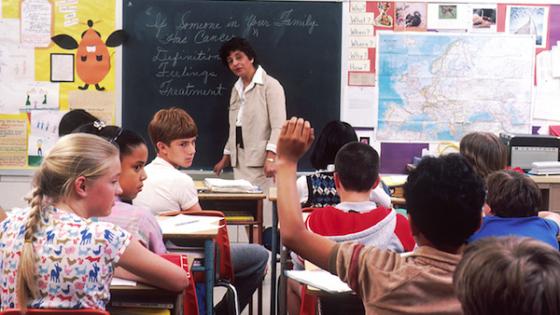Much has been written about the relationship between inequality and economic growth, yet a consensus on (even) the sign of this relationship has yet to emerge: Is high inequality today good or bad for future income growth prospects? What makes this a hard question to answer is the fact that there are arguably a variety of different channels via which inequality may have an impact on growth. Early thinking viewed inequality as a positive factor. Kaldor (1956), for example, considers income inequality as necessary for the provision of savings (the rich save more than the poor), and thus key for capital accumulation and economic growth. Also, more unequal societies may provide stronger incentives for individuals to work harder in order to succeed.
More recently, studies have explored the conditions under which inequality may act as a negative factor. One strand of this literature appeals to the Meltzer-Richard median voter hypothesis (see, for instance, Alesina and Rodrik 1994 and Persson and Tabellini 1991). These works argue that high inequality prompts a relatively poor median voter to vote for high tax rates, which in turn reduce incentives for investment and cause low growth. However, it could also be that a poor median voter chooses redistributive policies that are not necessarily bad for growth, such as investments in public education, for example (Saint Paul and Verdier 1996). Galor and Zeira (1993) and Banerjee and Newman (1993) emphasise credit market imperfections, namely the inability of the poor to get loans to finance their education and to become entrepreneurs. More unequal societies may then be more prone to wasting human resources, which would lead to lower growth. According to Galor and Moav (2006), the key to fast growth in modern societies is not capital accumulation but improvements in human capital.
Inequality of opportunity is mostly bad for growth
Marrero and Rodríguez (2012, 2013) decompose total inequality into an inequality of opportunity component (defined as the inequality that is due to circumstances outside the person’s control such as parental education, race and country of origin) and a residual inequality component that is assumed to be due to effort and luck (Roemer 1993). In two separate applications, one to the EU member countries and one to the American states, they find that inequality of opportunity is negatively correlated with growth while the residual (“good inequality”) tends to help growth. The rationale is that inequality of opportunity may harm economic growth because it favours human capital accumulation by individuals with better social origins, rather than by those with more talent. Perceptions of unequal opportunities, by affecting individual aspirations, may also reduce investments in human capital.
Other empirical studies have obtained similar results. Hsieh et al. (2013) exploit data from the US between 1960 and 2008 to show that occupational barriers faced by minorities are bad for growth. Bradbury and Triest (2016), using measures of absolute and relative inter-generational mobility as proxies for equality of opportunity, find that mobility has a positive effect on future economic growth. It has proven harder to reproduce the negative relationship between inequality of opportunity and growth using cross-country data (Ferreira et al 2014), either because the relationship does not hold true in all countries, or because the data are not strictly comparable across countries.
Inequality of opportunity is particularly bad for the poor
To study how inequality of opportunity affects the income growth of individuals at different steps of the socio-economic ladder, one must also understand growth. In an earlier study, van der Weide and Milanovic (2014) found that higher inequality favours the growth prospects of the rich while it limits the growth prospects of the poor. To what extent is this relationship driven by inequality of opportunity? In a new working paper (Marrero et al 2016), we try to answer this question by “unpacking” both inequality and growth.
Using individual-level data from the US covering the period from 1960 to 2010, we compute state level measures of inequality of opportunity, total inequality, and income growth rates at different steps of the income distribution. We use the same data to derive a set of controls including education, employment and demographics. The inequality of opportunity measure of choice quantifies the degree to which race and gender determine a person’s income success (the data set does not include information on parental education). Alternative measures of inequality of opportunity are considered for robustness.
Our study confirms that total inequality is negatively correlated with the future income growth of the poor and positively correlated with the income growth of the rich. Adding inequality of opportunity to the regression reveals that the correlation between inequality and growth is largely driven by this inequality, thus rendering the effect of total inequality mostly insignificant. The robustness analysis confirms that this is particularly true for the poor: It is mostly inequality of opportunity that is holding back the growth prospects at the bottom end of the income distribution. While there appears to be a positive correlation between total inequality (as well as inequality of opportunity) and the income growth of the rich, this association is not as robust. This result, if confirmed by more studies, is potentially very important: it identifies the type of inequality which holds back the growth chances of the poor.
Future research will hopefully shed light on how inequality of opportunity affects a person’s income success. It is conceivable that inequality of opportunity proxies unequal access to good schooling or discrimination in the labour market, to name two candidate channels. Both of these mechanisms would suggest that inefficiencies disproportionally affect the growth prospects of the disadvantaged.
Promoting inclusive growth
Our paper suggests that policies that equalise individual opportunity may promote not only equity but also economic growth – above all for poor individuals. One way of equalising opportunity is by increasing public spending on the education of children from disadvantaged backgrounds or by promoting cash transfers conditional on school attendance. Empirical findings for Europe show that reducing high school dropout rates is an effective way of increasing opportunities (Marrero and Rodríguez 2012). Improving the quality of public education to match that of private education can also help to reduce inequality of opportunity. Other policy interventions may include reducing long-term unemployment and improving access to childcare. By curbing inequality of opportunity, these policies may promote not only social justice but plausibly also economic growth. It is unclear, however, where the push for such inclusive growth policies will be coming from, when those in power stand to gain the least from such changes .
Authors’ note: The views expressed here are those of the authors and do not necessarily represent those of the institutions with which they are affiliated.
References
Alesina, A and D Rodrik (1994), “Distributive politics and economic growth”, Quarterly Journal of Economics 109: 465-90.
Autor, D and D Dorn (2013), “The growth of low-skill service jobs and the polarization of the US labor market”, American Economic Review 103(5): 1553-1597.
Autor, D, L Katz and M Kearney (2008), “Trends in US wage inequality: Revising the revisionists”, Review of Economics and Statistics 90(2): 300-323.
Banerjee, A and A Newman (1993), “Occupational choice and the process of development”, Journal of Political Economy 101(2): 274-298.
Bradbury, K and R Triest (2016), “Inequality of opportunity and aggregate economic performance”, Russell Sage Foundation Journal of the Social Sciences 2: 178-201.
Ferreira, F, C Lakner, M A Lugo and B Ozler (2014), “Inequality of opportunity and economic growth: A cross-country analysis”, World Bank Policy Research Working Paper 6915.
Galor, O and J Zeira (1993), “Income distribution and macroeconomics”, Review of Economic Studies 60: 35-52.
Galor, O and O Moav (2006), “From physical capital to human capital accumulation: Inequality and the process of development”, Review of Economic Studies 71(4): 1001-1026.
Hsieh, C, E Hurst, C I Jones and P J Klenow (2013), “The allocation of talent and US economic growth”, NBER Working Paper No. 18693.
Kaldor, N. (1956), “Alternative theories of distribution”, Review of Economic Studies 23: 83-100.
Marrero, G A and J G. Rodríguez (2012), “Inequality of opportunity in Europe”, Review of Income and Wealth 58: 597-621.
Marrero, G A and J G Rodríguez (2013), “Inequality of opportunity and growth”, Journal of Development Economics 104: 107-122.
Marrero, G A, J G Rodríguez and R van der Weide (2016), “Unequal opportunity, unequal growth”, World Bank Policy Research Working Paper Series 7853.
Persson, T and G Tabellini (1994), “Is inequality harmful for growth? Theory and evidence”, American Economic Review 84: 600-621.
Roemer, J E (1993), “A pragmatic approach to responsibility for the egalitarian planner”, Philosophy & Public Affairs 20: 146-166.
Saint Paul, G and T Verdier (1996), “Inequality, redistribution and growth: A challenge to the conventional political economy approach”, European Economic Review 40: 719-728.
van der Weide, R and B Milanovic (2014), “Inequality is bad for growth of the poor (but not for that of the rich)”, VoxEU.org, 29 November.







